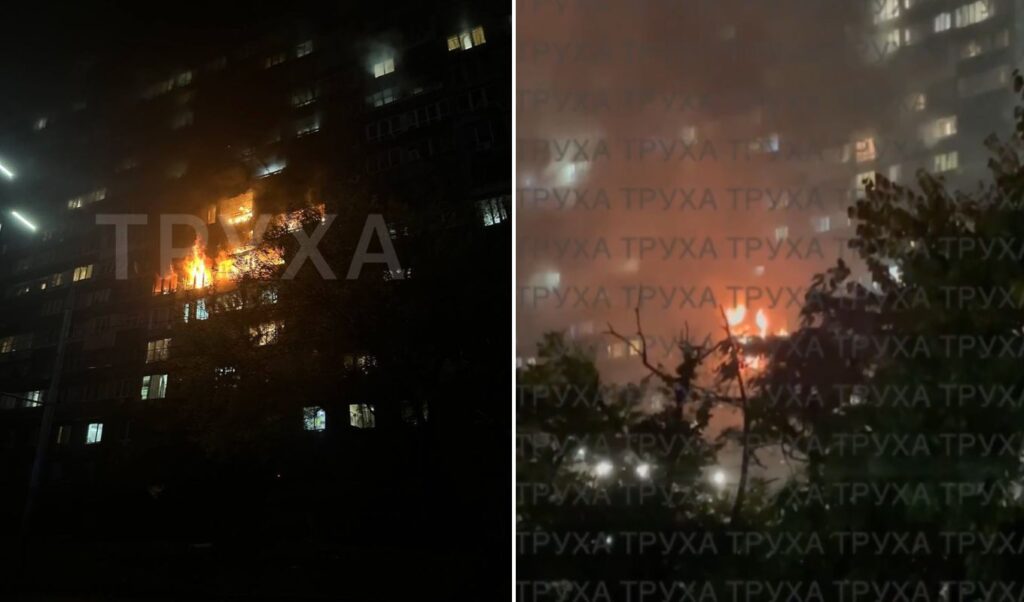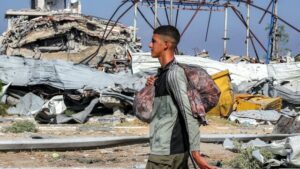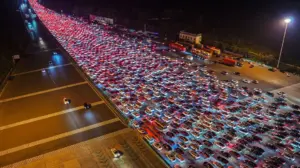A large-scale Russian attack occurred on Ukraine’s capital, Kyiv, on the night of Thursday (9/10) into Friday, resulting in power cuts in the eastern sector of the city, as announced by local authorities. Reporters from the French Press Agency heard numerous explosions and the hum of unmanned aerial attack vehicles.
Russia: missile and drone strike on Kyiv
The Ukrainian air force reported via Telegram an “enemy attack with ballistic missiles and massive attack with assault drones,” urging the population to remain in shelters. According to Ukrainian Energy Minister Svitlana Hrynchuk via Facebook, on a national scale, “the Russians are launching massive strikes against Ukrainian energy infrastructure”
Russian forces are striking Kyiv right now.
Explosions echo across several districts.Our correspondents report blasts just outside their homes. pic.twitter.com/LYMfvJXomw
— KyivPost (@KyivPost) October 9, 2025
In Kyiv, “the left (eastern) bank (of the Dnieper) has no electricity. There are also problems with the water supply network,” reported Mayor Vitali Klitschko via Telegram, emphasizing that “the enemy is attacking basic infrastructure” of the city.
According to unconfirmed information circulating via Telegram, a power generation station serving the capital was targeted. A French Press Agency journalist located in this sector of the Ukrainian capital confirmed that electricity and water supply networks are not functioning.
A residential high-rise is on fire in Kyiv following a Russian attack pic.twitter.com/cdAQqW1syt
— Visegrád 24 (@visegrad24) October 10, 2025
Seven-year-old boy loses his life
Meanwhile, a seven-year-old boy was killed during the strikes in the Zaporizhzhia region in central Ukraine, announced regional governor Ivan Fedorov via Telegram. In Kyiv, local authorities reported at least 9 injuries, five of whom were transported to hospitals. Apartments in residential buildings caught fire, while fragments of downed drones fell in various parts of the city.
Energy Minister Hrynchuk emphasized that “specialists are taking all necessary measures to minimize the negative consequences” of the bombings and, “as soon as security conditions permit,” will begin “assessing the impact of the attack and restoration work.”
Russian armed forces have again targeted Ukrainian energy infrastructure as winter approaches. They have bombed Ukrainian cities almost daily since the war began in February 2022, and energy infrastructure has been repeatedly targeted.
On Wednesday, Ukrainian President Volodymyr Zelensky accused Russia of seeking to cause “chaos” by multiplying strikes, especially against railway infrastructure. “Russia’s goal is to sow chaos, to exert psychological pressure on people,” he argued. Analysts point out that the bulk of Ukrainian armed forces logistics is conducted via railways.
Winter “extremely difficult”
In Sloviansk, a city in Donbas under Ukrainian control, the mayor recently called on the most vulnerable, especially families with children and the elderly, to leave, as heating systems have been targeted by relentless attacks. “The risk is great and the winter period extremely difficult,” said Mayor Vadym Liakh via social media.
For his part, President Zelensky spoke of “great pressure” due to Russian strikes in the natural gas sector, which could force Kyiv to increase imports. Ukrainian armed forces also frequently strike targets in Russia, especially refineries, which has increased fuel prices in the country since summer.
President Zelensky argued that “fuel shortages exceed 20% of needs” in Russia. Ukraine recently struck a power generation unit in the border Russian region of Belgorod, causing power outages. A Ukrainian delegation led by Prime Minister Yulia Sviridenko is scheduled to travel to the US “early” next week for talks on energy and anti-aircraft defense, according to Zelensky.
Nine months after Donald Trump’s return to the White House, who had promised during his campaign to secure a very quick end to the war in Ukraine, Russian President Vladimir Putin remains deaf to calls for a ceasefire.
Source: APE-MPE




